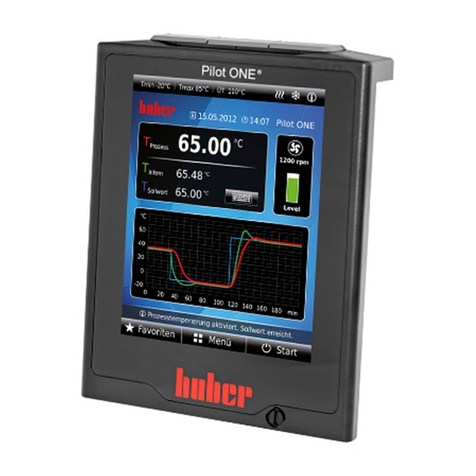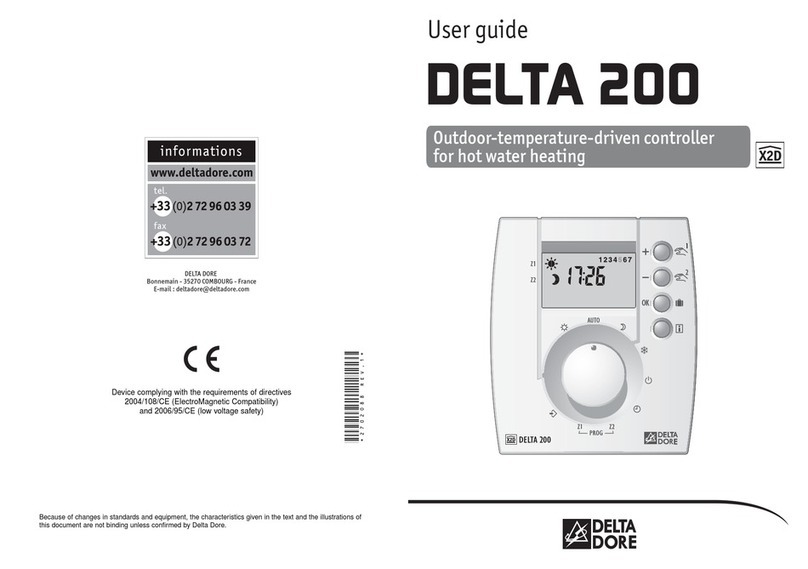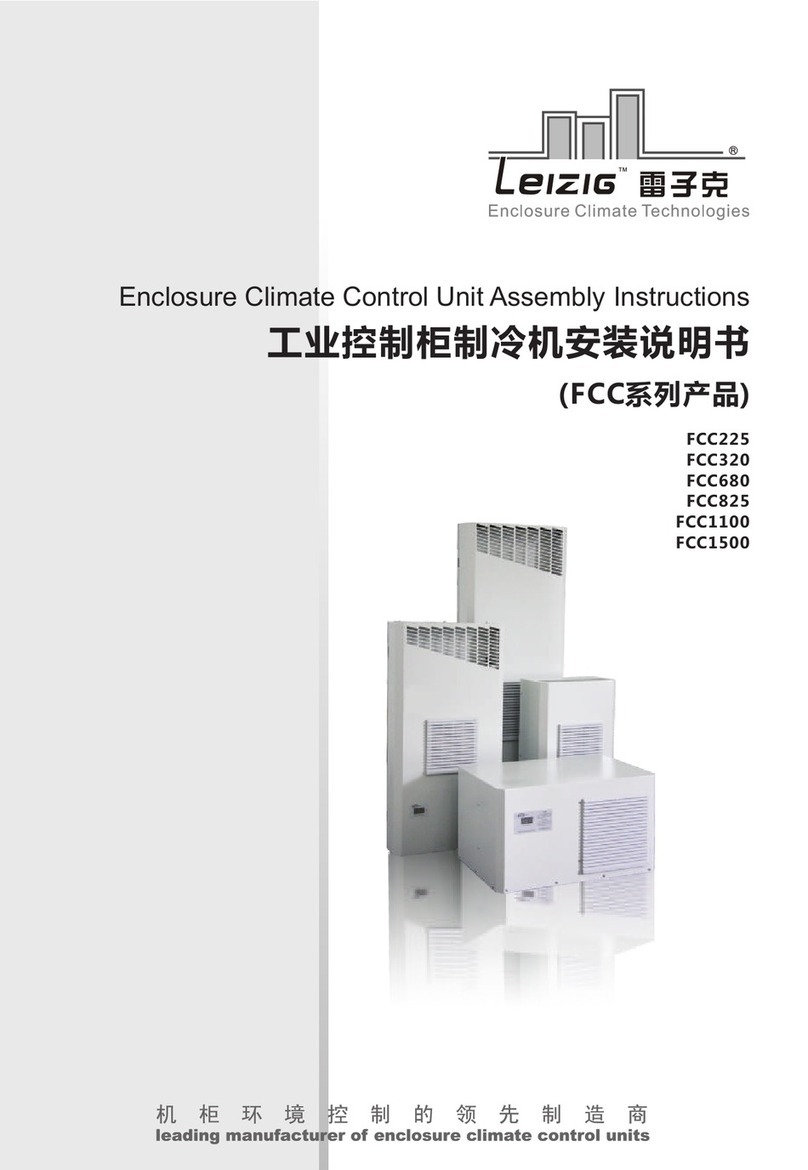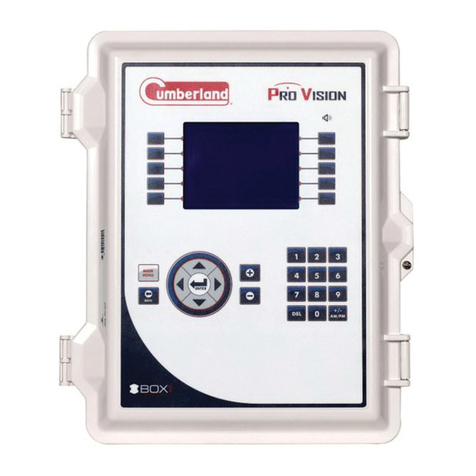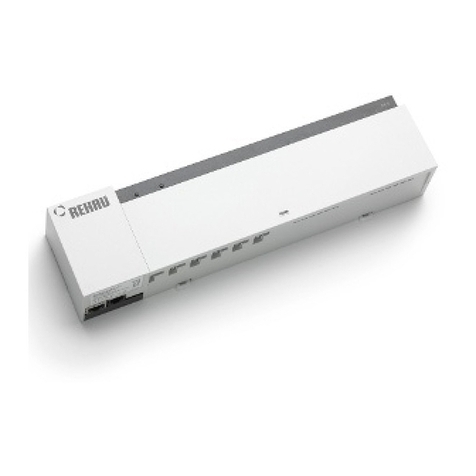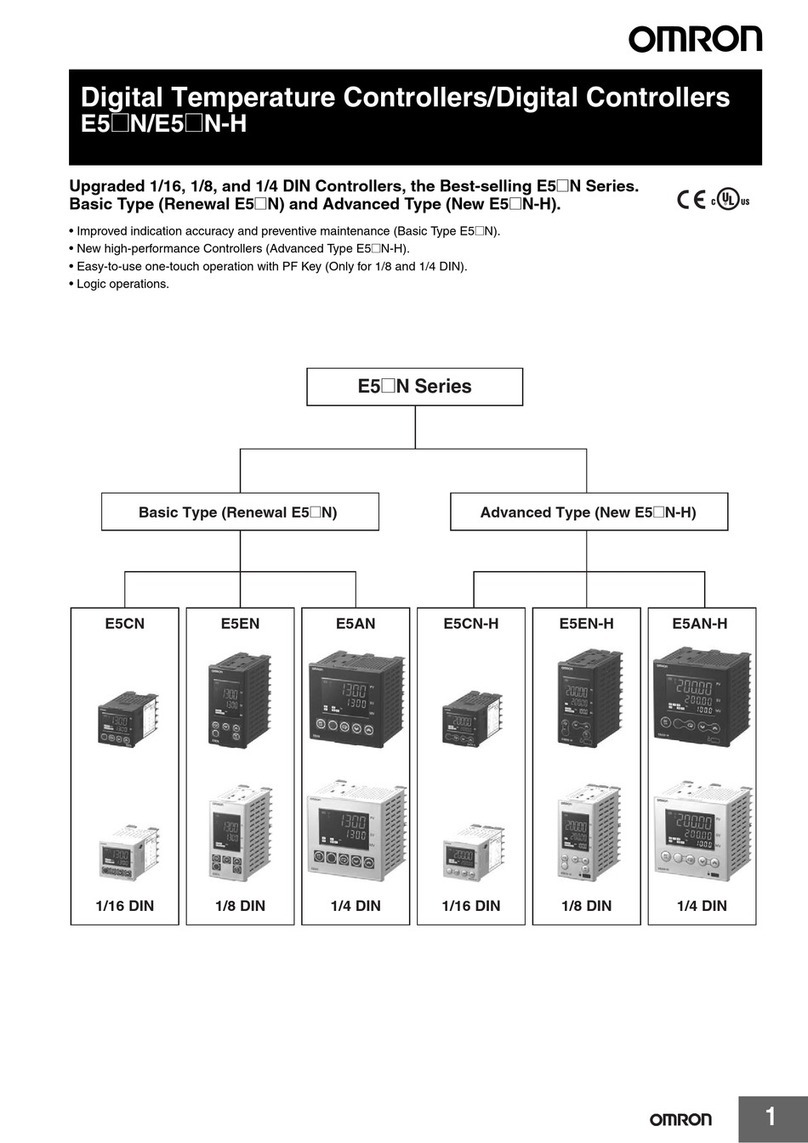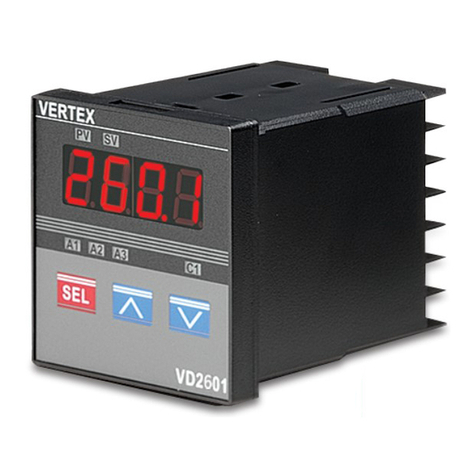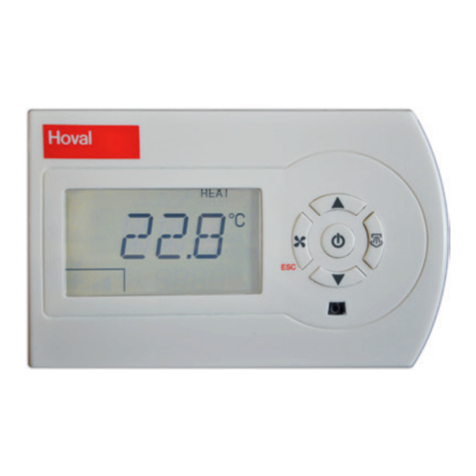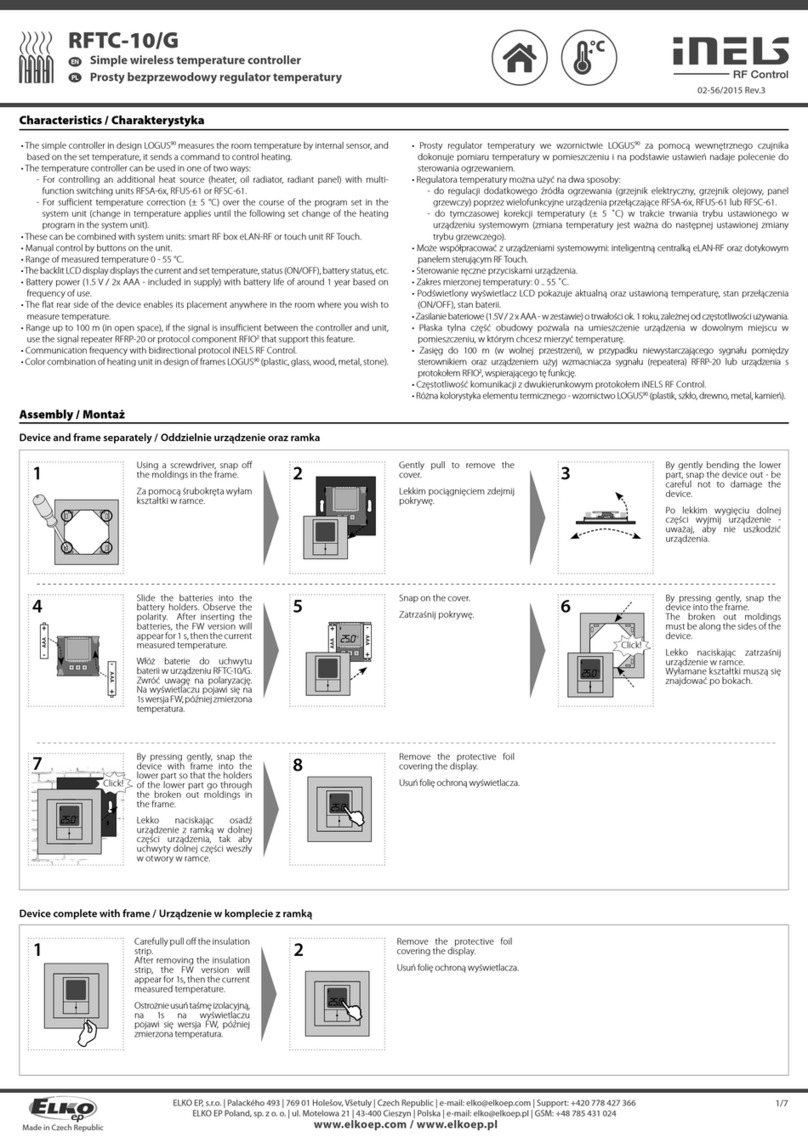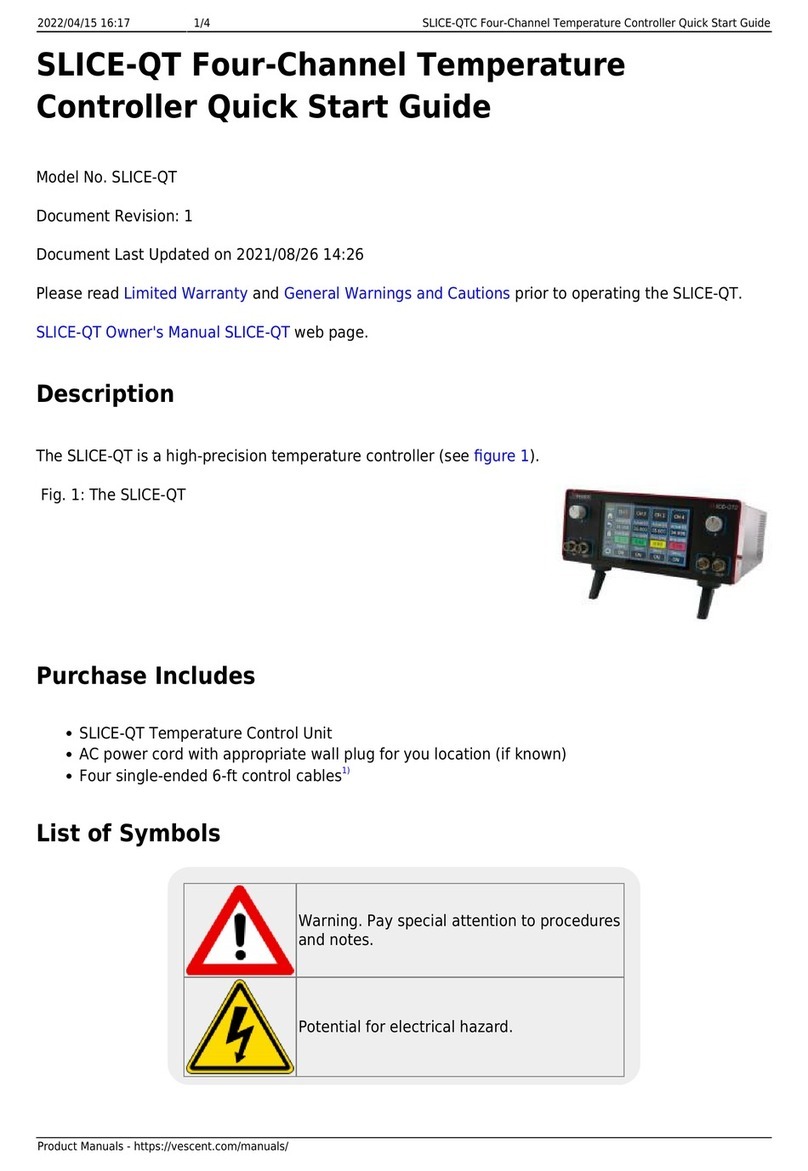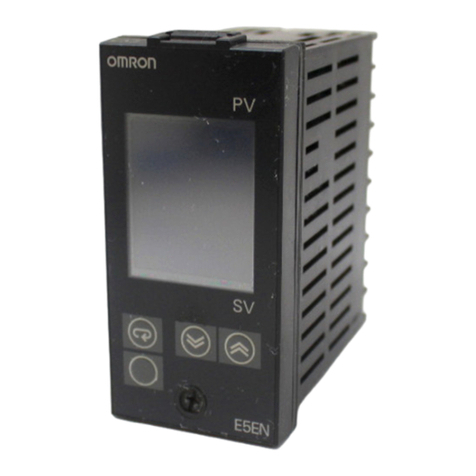Huber tango User manual

Unistat®
V2.0.0
Operation Manual


OPERATION MANUAL
Unistat®
V2.0.0


OPERATION MANUAL
V2.0.0en/09.06.16//15.09 Unistat®
5
Unistat®
Pilot ONE®
This operation manual is a translation of the original operation manual.
VALID FOR:
TABLE-TOP MODELS
Unistat tango® (w/wl)
Unistat® P404
Unistat® 405(w)
Unistat® 705(w)
FREE-STANDING MODELS
Unistat® 4xx(w)
Unistat® 5xx(w)
Unistat® P505w
Unistat® P527w
Unistat® 6xx(w)
Unistat® P634w
Unistat® 8x5(w)
Unistat® P810w
Unistat® 9xx(w)
Unistat® P904w
Unistat® 10x5w

OPERATION MANUAL
Unistat® V2.0.0en/09.06.16//15.09
6
“Unistat Control ONE“
and „Pilot ONE“
Description of the
LEDs in the flow dia-
gram
Components illustrat-
ed in the
LED flow diagram

OPERATION MANUAL
V2.0.0en/09.06.16//15.09 Unistat®
7
Layout of the “Home”
screen

OPERATION MANUAL
Unistat® V2.0.0en/09.06.16//15.09
8
Table of contents
V2.0.0en/09.06.16//15.09
1Introduction 14
1.1 Details on the declaration of conformity....................................................... 14
1.2 Safety .......................................................................................................... 14
1.2.1 Symbols used for Safety Instructions..............................................................14
1.2.2 Proper operation.............................................................................................15
1.2.3 Reasonably foreseeable misuse......................................................................15
1.3 Responsible bodies and operators – Obligations and requirements............... 16
1.3.1 Obligations of the responsible body ...............................................................16
1.3.1.1 Proper disposal of resources and consumables .........................................16
1.3.1.2 Temperature control unit with natural refrigerants (NR) ..........................17
1.3.1.3 Temperature control units with fluorinated greenhouse gases/refrigerants19
1.3.2 Requirements for operators ...........................................................................19
1.3.3 Obligations of the operators...........................................................................20
1.4 General information..................................................................................... 20
1.4.1 Description of workstation .............................................................................20
1.4.2 Safety devices to DIN 12876 ...........................................................................20
1.4.3 Further protective devices ..............................................................................21
1.4.3.1 Power interruption.....................................................................................21
1.4.3.2 Alarm functions ..........................................................................................21
1.4.3.3 Warning messages......................................................................................21
1.5 Exemplary illustrations of the cooling variants.............................................. 22
1.5.1 Air cooling .......................................................................................................22
1.5.2 Water cooling..................................................................................................22
1.5.3 Consequence of inadequate energy dissipation.............................................23
2Commissioning 24
2.1 In-plant transport......................................................................................... 24
2.1.1 Lifting and transporting the temperature control unit...................................24
2.1.1.1 Temperature control unit with lifting eyes ................................................24
2.1.1.2 Temperature control unit without lifting eyes...........................................25
2.1.2 Positioning the temperature control unit.......................................................25
2.1.2.1 Temperature control unit with casters ......................................................25
2.1.2.2 Temperature control unit without casters .................................................25
2.2 Transportation lock ...................................................................................... 25
2.2.1 Transportation lock Type A.............................................................................26
2.2.1.1 Releasing the transportation lock (operating position)..............................26
2.2.1.2 Tightening the transportation lock (transport position) ............................26
2.2.2 Transportation lock Type B .............................................................................26
2.2.2.1 Releasing the transportation lock (operating position)..............................26
2.2.2.2 Tightening the transportation lock (transport position) ............................26
2.3 Unpacking.................................................................................................... 27
2.4 Ambient conditions...................................................................................... 27
2.4.1 EMC-specific notes..........................................................................................28
2.5 Installation conditions.................................................................................. 29
2.6 Temperature control unit for outdoor installation incl. winter operation ...... 29
2.7Recommended temperature control and cooling water hoses ...................... 30
2.8 Wrench sizes and torques............................................................................. 30

OPERATION MANUAL
V2.0.0en/09.06.16//15.09 Unistat®
9
2.9 Temperature control units with water cooling.............................................. 31
2.10 Preparations for operation ........................................................................... 32
2.10.1 Unscrewing/activating the leveling feet (if any) .............................................32
2.10.2 Opening/closing valves ...................................................................................32
2.10.3 Mounting/removing the isolating sleeve (optional) .......................................33
2.10.3.1 Mounting the Isolating sleeve (only for externally open applications)......33
2.10.3.2 Removing the Isolating sleeve (only for externally closed applications)....33
2.11 Connecting an externally closed/open application........................................ 34
2.11.1 Connecting an externally closed application ..................................................34
2.11.2 Connecting an externally open application (bath)..........................................34
2.12 Connecting to the power supply ................................................................... 35
2.12.1 Connection using socket with protective earth (PE).......................................35
2.12.2 Connection via hard wiring .............................................................................35
2.12.3 Connecting the functional earth .....................................................................36
2.12.4 Converting the power supply connection.......................................................36
3Function description 37
3.1 Function description of the temperature control unit ................................... 37
3.1.1 General functions............................................................................................37
3.1.2 Other functions ...............................................................................................37
3.2 Information on the thermal fluids ................................................................ 38
3.3 To be noted when planning the test ............................................................. 39
3.4 “Pilot ONE®” controller ................................................................................ 40
3.4.1 Functional overview of “Pilot ONE®” ..............................................................40
3.5 Unistat® LED diagram ................................................................................... 42
3.6 Clock/event function.................................................................................... 42
3.6.1 Rechargeable accumulator .............................................................................42
3.6.2 Programmable event function ........................................................................43
3.6.2.1 Event function “Alarm clock event” ...........................................................43
3.6.2.2 Event function “Program event” ................................................................43
3.7 Operation via the touch screen..................................................................... 43
3.8 Display instruments ..................................................................................... 43
3.8.1 The touchscreen [88] ......................................................................................43
3.8.2 The LED-Indicator Temperature [90] ..............................................................44
3.8.3 The LED-Indicator Flow Chart [91] ..................................................................44
3.8.4 The LED-Indicator Status [92] .........................................................................44
3.9 Control instruments ..................................................................................... 44
3.9.1 The touchbuttons............................................................................................44
3.9.2 The categories.................................................................................................44
3.9.3 The sub-categories..........................................................................................45
3.9.4 The dialogs ......................................................................................................45
3.10 Function examples ....................................................................................... 45
3.10.1 Display of software version.............................................................................45
3.10.2 Start & Stop.....................................................................................................45
3.10.3 Copying the settings to a data carrier.............................................................46
3.10.3.1 Saving to a USB flash drive .........................................................................46
3.10.3.2 Loading from a USB flash drive...................................................................46
3.10.4 Restore factory settings ..................................................................................47
3.10.4.1 Restore to factory settings without overtemperature protection .............48
3.10.4.2 Restore to factory settings including overtemperature protection ...........48
4Setup mode 50
4.1 Setup mode ................................................................................................. 50

OPERATION MANUAL
Unistat® V2.0.0en/09.06.16//15.09
10
4.1.1 Turning on the temperature control unit .......................................................50
4.1.2 Setting the overtemperature protection ........................................................50
4.1.2.1 General information on the overtemperature protection .........................51
4.1.2.2 Setting “OT limit: heating” .........................................................................51
4.1.2.3 Setting “OT expansion vessel”....................................................................52
4.1.2.4 Setting “Process Safety” .............................................................................52
4.1.2.5 Monitoring via “Display OT values”............................................................52
4.1.3 Testing overtemperature protection for functionality ...................................52
4.1.4 Adjusting the Delta T limiter ...........................................................................53
4.1.4.1 Changing the Delta T limiter.......................................................................53
4.2 The temperature control circuit.................................................................... 53
4.2.1 Select temperature control: Internal or process ............................................54
4.2.2 Temperature control to internal temperature ...............................................54
4.2.3 Temperature control to process temperature................................................54
4.2.4 Delta T limiter .................................................................................................55
4.2.5 Monitoring the Pt100 temperature sensors...................................................55
4.2.6 Optimum control parameters for optimum temperature control..................55
4.2.7 Sub-category: “Select auto/expert mode”......................................................56
4.2.8 Sub-category: “Configuration auto” ...............................................................56
4.2.8.1 Sub-category: “Find parameters”...............................................................56
4.2.8.2 Sub-category: “Control Dynamics”.............................................................58
4.2.8.3 Sub-category: “Fluid Properties”................................................................59
4.2.8.4 Sub-category: “Display parameters” ..........................................................60
4.2.9 Category: “Configuration manual”..................................................................60
4.2.9.1 Sub-category: “Change parameters”..........................................................60
4.2.9.2 Sub-category: “Display parameters” ..........................................................61
4.2.9.3 Sub-category: “Control structure”..............................................................62
4.2.10 Sub-category: “Reset parameters” .................................................................62
4.2.11 Sub-category: “Display parameters”...............................................................62
4.2.12 Setting the setpoint thresholds ......................................................................63
4.2.13 Setting the setpoint ........................................................................................63
4.3 Filling, venting, degassing and draining......................................................... 64
4.3.1 Externally closed application ..........................................................................64
4.3.1.1 Filling and venting externally closed application........................................64
4.3.1.2 Degassing externally closed applications ...................................................66
4.3.1.3 Draining externally closed applications......................................................68
4.3.2 Externally open application ............................................................................68
4.3.2.1 Filling and venting externally open application..........................................69
4.3.2.2 Degassing externally open applications .....................................................70
4.3.2.3 Draining externally open applications........................................................71
5Normal operation 73
5.1 Automatic operation .................................................................................... 73
5.1.1 Temperature control.......................................................................................73
5.1.1.1 Starting the temperature control process..................................................73
5.1.1.2 Ending the temperature control process ...................................................73
5.1.2 Temperature control via a created temperature control program ................74
5.1.2.1 Starting the temperature control program ................................................74
5.1.2.2 Ending/cancelling the temperature control program ................................74
6Interfaces and software update 75
6.1 Interfaces at the “Pilot ONE®” controller ...................................................... 75
6.1.1 10/100 Mbps Ethernet for RJ45 network sockets ..........................................75

OPERATION MANUAL
V2.0.0en/09.06.16//15.09 Unistat®
11
6.1.2 USB-2.0 interface ............................................................................................75
6.1.2.1 USB-2.0 interface, host...............................................................................76
6.1.2.2 USB-2.0 interface, device ...........................................................................76
6.2 Interfaces at the “Unistat® Control ONE”...................................................... 76
6.2.1 Interfaces at the “Unistat® Control ONE” side................................................76
6.2.1.1 Removing the cover....................................................................................76
6.2.1.2 Jack ECS (External Control Signal) standby.................................................76
6.2.1.3 Connector POKO (floating contact) alarm..................................................77
6.2.2 Interfaces at the “Unistat® Control ONE” top side .........................................78
6.2.2.1 Service interface.........................................................................................78
6.2.2.2 Female RS232 Serial (with adapter cable)..................................................78
6.2.2.3 Connection jack for Pt100 process controller sensor.................................79
6.3 Interfaces at the Com.G@te® (optional) ....................................................... 79
6.3.1 Jack LEVEL (Com.G@te® external only) ..........................................................80
6.3.2 Connector POKO (floating contact) alarm ......................................................80
6.3.3 Jack AIF Reg-E-Prog.........................................................................................80
6.3.4 Jack ECS (External Control Signal) standby .....................................................80
6.3.5 Jack RS232/RS485 serial..................................................................................81
6.4 Firmware update.......................................................................................... 81
7Service/maintenance 82
7.1 Messages from the temperature control unit ............................................... 82
7.2 Replacing the “Pilot ONE®” or “Unistat® Control ONE” ................................. 82
7.2.1 Replacing the “Pilot ONE®”.............................................................................82
7.2.2 Replacing the “Unistat® Control ONE”............................................................83
7.3 Maintenance................................................................................................ 83
7.3.1 Function check and visual inspection .............................................................83
7.3.2 Replacing temperature control or coolant hoses ...........................................84
7.3.2.1 Replacing temperature control hoses ........................................................84
7.3.2.2 Replacing coolant hoses .............................................................................85
7.3.3 Clean liquefier fins (air-cooled temperature control unit) .............................85
7.3.4 Clean hat-type strainer (dirt trap) (water-cooled temperature control unit).86
7.3.5 Empty the drip tray .........................................................................................87
7.4 Thermal fluid inspection, replacement and circuit cleaning........................... 87
7.4.1 Thermal fluid inspection .................................................................................87
7.4.2 Thermal fluid replacement .............................................................................88
7.4.2.1 Externally closed application......................................................................88
7.4.2.2 Externally open application........................................................................88
7.4.3 Rinsing the thermal fluid circuit......................................................................88
7.5 Cleaning the surfaces ................................................................................... 90
7.6 Inspect the mechanical seal.......................................................................... 90
7.7 Plug contacts................................................................................................ 90
7.8 Decontamination/repairs ............................................................................. 91
8Shutting down 92
8.1 Safety instructions and basic principles ........................................................ 92
8.2 Switch-off .................................................................................................... 92
8.3 Draining the cooling water ........................................................................... 93
8.3.1 Draining process .............................................................................................93
8.4 Transportation lock ...................................................................................... 93
8.5 Packing ........................................................................................................ 93
8.6 Shipping....................................................................................................... 93
8.7 Disposal ....................................................................................................... 94

OPERATION MANUAL
Unistat® V2.0.0en/09.06.16//15.09
12
8.8 Phone number and company address........................................................... 95
8.8.1 Telephone number: Customer Support ..........................................................95
8.8.2 Telephone number: Sales ...............................................................................95
8.8.3 Email address: Customer Support...................................................................95
8.8.4 Service/return address....................................................................................95
8.9 Certificate of Compliance ............................................................................. 95
9Annex 96

OPERATION MANUAL
V2.0.0en/09.06.16//15.09 Unistat®
13
Foreword
Dear Customer,
Thank you for choosing a temperature control unit from Peter Huber Kältemaschinenbau AG. You
have made a good choice. Thank you for your trust.
Please read the operation manual carefully before putting the unit into operation. Strictly follow all
notes and safety instructions.
Follow the operation manual with regard to transport, start-up, operation, maintenance, repair,
storage and disposal of the temperature control unit.
We fully warrant the temperature control unit for the specified normal operation.
The models listed on page 5 are referred to in this operation manual as temperature control units.
Liability for errors and misprints excluded.
The following trademarks and the Huber logo are registered trademarks of Peter Huber Kältemaschinenbau AG
in Germany and/or other countries worldwide: BFT®, CC®, CC-Pilot®, Com.G@te®, Compatible Control®,
CoolNet®, DC®, E-grade®, Grande Fleur®, Minichiller®, Ministat®, MP®, MPC®, Peter Huber Minichiller®, Petite
Fleur®, Pilot ONE®, RotaCool®, Rotostat®, SpyControl®, SpyLight®, Tango®, TC®, UC®, Unical®, Unichiller®,
Unipump®, Unistat®, Unistat-Pilot®, Unistat Tango®, Variostat®, Web.G@te®. The following trademarks are
registered in Germany to DWS Synthesetechnik: DW-Therm®, DW-Therm HT®

Introduction
OPERATION MANUAL Chapter 1
Unistat® V2.0.0en/09.06.16//15.09
14
1Introduction
1.1 Details on the declaration of conformity
The equipment complies with the basic health and safety requirements of the European Directives
listed below:
▪Machinery Directive 2006/42/EC
▪Low Voltage Directive 2006/95/EC
▪EMC Directive 2004/108/EC
1.2 Safety
1.2.1 Symbols used for Safety Instructions
Safety instructions are marked by the below combinations of pictograms and signal words. The
signal word describes the classification of the residual risk when disregarding the operation manual.
Denotes an immediate hazardous situation that will result in death or serious injuries.
Denotes a general hazardous situation that may result in death or serious injuries.
Denotes a hazardous situation that can result in injury.
Denotes a situation that can result in property material damage.
Denotes important notes and usable hints.
Notes in conjunction with Ex p cabinets.
The safety information in this operation manual is designed to protect the responsible body, opera-
tor and the equipment from damage. Safety information must always appear BEFORE instructions
and at the beginning of each chapter. You should be first informed about the residual risks due to
misuse before you begin an operation.
Safety information and
procedure

Introduction
Chapter 1 OPERATION MANUAL
V2.0.0en/09.06.16//15.09 Unistat®
15
1.2.2 Proper operation
Operating the temperature control unit in a potentially explosive area
DEATH THROUGH EXPLOSION
Do NOT install or start up the temperature control unit within an ATEX zone.
Improper use
SERIOUS INJURY AND PROPERTY DAMAGE
Store the operation manual where it is easy to access in close proximity to the temperature
control unit.
Only adequately qualified operators may work with the temperature control unit.
Operators must be trained before handling the temperature control unit.
Check that the operators have read and understood the operation manual.
Define precise responsibilities of the operators.
Personal protective equipment must be provided to the operators.
Be sure to follow the responsible body’s safety rules to protect life and limb and to limit dam-
ages!
Modifications to the temperature control unit by third-parties
DAMAGE TO THE TEMPERATURE CONTROL UNIT
Do not allow third parties to make technical modifications to the temperature control unit.
In case of any modification of the temperature control unit not approved by the manufacturer,
the CE declaration of conformity becomes invalid.
Only specialists trained by the manufacturer may carry out modifications, repairs or mainte-
nance work.
The following must be observed without fail:
Only use the temperature control unit in a fault-free condition!
Have start-up and repairs carried out only by specialists!
Do not ignore, bypass, dismantle or disconnect any safety devices!
The temperature control unit must not be used for any purposes other than temperature control in
accordance with the operation manual.
The temperature control unit is manufactured for industrial use. The temperature control unit main-
tains the temperature of certain applications, including glass or metal reactors or other expedient
items in laboratories and industry. Flow-through coolers and calibration baths must be used only in
combination with Huber temperature control units. Thermal fluids suitable for the overall system
are used. The chilling and heating capacity is provisioned at the pump connections or - where pre-
sent - in the tempering bath. The technical specification of the temperature control unit is given in
the data sheet (from page 96 in section »Annex«). The temperature control unit must be installed,
configured and operated according to the handling instructions in this operating manual. Failure to
comply with the operation manual is deemed improper use. The temperature control unit conforms
to state-of-the-art technology and the recognized safety regulations. Safety devices are built into
your temperature control unit.
1.2.3 Reasonably foreseeable misuse
The temperature control unit is operated outside of its specifications
MATERIAL DAMAGE CAUSED BY PREMATURE AGING / MATERIAL FATIGUE OF THE PLATE HEAT
EXCHANGER
Do not permanently operate the temperature control unit together with very dynamic and
high temperature changes recurring in short intervals.
The guarantee will expire if the temperature control unit is exposed to this type of application.
Peter Huber Kältemaschinenbau AG offers tried and tested technical solutions for these types
of applications.

Introduction
OPERATION MANUAL Chapter 1
Unistat® V2.0.0en/09.06.16//15.09
16
Without an Ex p cabinet, the temperature control unit is NOT protected against explosion and
must NOT be installed or put into operation within an ATEX Zone. When operating the tempera-
ture control unit in conjunction with an Ex p cabinet, the information in the annex (section ATEX
operation) must be observed and followed. This annex is only provided for temperature control
units delivered with an Ex p cabinet. If this annex is missing, please immediately contact the Cus-
tomer Support of Peter Huber AG Kältemaschinenbau AG (the telephone number is provided on
page 95 section »Phone number and company address«).
The temperature control units Unistat tango (w/wl), Unistat 405(w), Unistat 410(w) und Unistat
705(w) do not have a plate heat exchanger.
Use with medical devices (e.g. in Vitro diagnostic procedure) or for direct foodstuff temperature
control is NOT permissible.
The temperature control unit must NOT be used for any purposes other than temperature control in
accordance with the operation manual.
The manufacturer accepts NO liability for damage caused by technical modifications to the temper-
ature control unit, improper handling or use of the temperature control unit if the operation manu-
al is not observed.
1.3 Responsible bodies and operators – Obligations and
requirements
1.3.1 Obligations of the responsible body
The operation manual is to be stored where it is easy to access in close proximity to the temperature
control unit. Only adequately qualified operators (e.g. chemists, CTA, physicists etc.) are permitted
to work with the temperature control unit. Operators must be trained before handling the tempera-
ture control unit. Check that the operators have read and understood the operation manual. Define
precise responsibilities of the operators. Personal protective equipment must be provided to the
operators.
▪The responsible body must install a condensation water / thermofluid drip tray below the tem-
perature control unit.
▪The responsible body must check whether national regulations require the mandatory installation
of a drain tray for the installation area of the temperature control unit/the entire system.
▪Our temperature control unit complies with all applicable safety standards.
▪Your system, which uses our temperature control unit, must be as safe.
▪The responsible body must design the system so as to ensure it is safe.
▪Huber is not responsible for the safety of your system. The responsible body is responsible for the
safety of the system.
▪Whilst the temperature control unit provided by Huber meets all the applicable safety standards,
integration into a system may give rise to hazards that are characteristic of the other system’s de-
sign and beyond the control of Huber.
▪It is the responsibility of the system integrator to ensure that the overall system, into which this
temperature control unit is integrated, is safe.
▪The >Mains isolator< [36] (if present) may be provided with a facility to lock the main isolator in
the off position to facilitate safe system installation and maintenance of the temperature control
unit. It is the responsibility of the responsible body to develop any lock-out/tag-out procedure in
accordance with local regulations (e.g. CFR 1910.147 for the US).
1.3.1.1 Proper disposal of resources and consumables
Do comply with all national disposal regulations applicable for you. Contact your local waste man-
agement company for any questions concerning disposal.

Introduction
Chapter 1 OPERATION MANUAL
V2.0.0en/09.06.16//15.09 Unistat®
17
Material / Aids Disposal / Cleaning
Temperature control
unit packaging material Keep the packaging material for future use (e.g. transport).
Thermal fluid
Please refer to the safety data sheet of the thermal fluid used for information on its
proper disposal.
Use the original thermal fluid container when disposing it.
Filling accessories, e.g.
beaker
Clean the filling accessories for reuse. Make sure that the materials and cleaning
agents used are properly disposed of.
Aids such as towels,
cleaning cloths
Tools used to take up spilled thermal fluid must be disposed of in the same fashion
as the thermal fluid itself.
Tools used for cleaning must be disposed of depending on the cleaning agent used.
Cleaning agents such as
stainless steel cleaning
agents, sensitive-fabrics
detergents
Please refer to the safety data sheet of the cleaning agent used for information on its
proper disposal.
Use the original containers when disposing of large quantities of cleaning agents.
Consumables such as air
filter mats, temperature
control hoses
Please refer to the safety data sheet of the consumables used for information on
their proper disposal.
1.3.1.2 Temperature control unit with natural refrigerants (NR)
Over 8 g refrigerant per m³ room air
DEATH OR SERIOUS INJURY DUE TO EXPLOSION
Observe the rating plate (amount of natural refrigerant contained) and the room size (maxi-
mum room concentration of natural refrigerant in case of leakage) when installing the temper-
ature control unit.
Over 8 g refrigerant per m³ room air: A gas warning sensor must be fitted and functioning.
The gas warning sensor must be calibrated and maintained at regular intervals (between 6 and
12 months).
The temperature control unit is not approved for operation in an ATEX zone.
Huber products with natural refrigerants work with numerous proven, safe and highly-sustainable
technologies. The relevant standards and regulations for temperature control units with natural
refrigerants contain a number of stipulations, the importance of complying with which is set out
below. Also observe on page 15 the section »Proper operation«.
Huber temperature control units are constructed to be permanently sealed and are carefully
checked for leak tightness. Temperature control units with more than 150 g natural refrigerant are
equipped with an additional gas warning sensor. To find out whether your temperature control unit
is equipped with a gas warning sensor, refer to the data sheet from page 96 in section »Annex«.
The fill quantity of your temperature control unit is stated on the data sheet (from page 96 in sec-
tion »Annex«) or on the rating plate on the rear of the temperature control unit. Observe page 27,
section »Ambient conditions«and page 29, section »Installation conditions«.
Class of
application
field
Application field Example of the installation
location
Max.
quantity of
refrigerant
AND
Max. permissible
quantity above
ground level (GL)
A General Publicly accessible area in a
public building
8 g/m3
ambient air
1.5 kg
B Monitored Laboratories 2.5 kg
C
Access only for
authorized
persons
Production equipment 10.0 kg
Temperature control units with more than 1 kg refrigerant must not be installed below ground level (GL).
Overview
Classifying the applica-
tion field

Introduction
OPERATION MANUAL Chapter 1
Unistat® V2.0.0en/09.06.16//15.09
18
Temperature control units with up to 150 g natural refrigerant
▪The temperature control unit has been constructed to the requirements of EU and EFTA countries.
▪Use the table as guidance for classifying the application field. Respect the max. refrigerant quanti-
ty stated therein.
Temperature control units WITH pre-installed gas warning sensor and > 150 g natural refrigerant
▪The temperature control unit has been constructed to the requirements of EU and EFTA countries.
▪Use the table as guidance for classifying the application field. Respect the max. refrigerant quanti-
ty or the permissible highest quantity above ground level (GL) stated therein.
▪Ventilation with optional supply and exhaust air connection: Use the temperature control unit’s
supply and exhaust air connection to connect it to the building’s exhaust system (see wiring dia-
gram from page 96 in Section »Annex«). First, remove the cover to the air inlet connection; an air
filter mat is installed behind it. This air filter mat must be checked / replaced at regular intervals
so that the air flowing into the temperature control unit is not reduced (see page 83, Section
»Function check and visual inspection«). Connect the building’s exhaust system with the temper-
ature control unit’s exhaust air port. The cover of the supply air port mustnot be removed if the
exhaust system provided in a building is not used.
▪The mounting plate for mounting a gas warning sensor is located inside the temperature control
unit in the vicinity of the >Cable entry gas warning sensor<[100].
▪For the position of the >Cable entry gas warning sensor< [100], please refer to the wiring diagram
from page 96 in Section »Annex«.
▪Additional information on the pre-installed gas detection sensor:
-The built-in gas detection sensor enables a safety shutdown at 20% of the lower explosive
limit via a power disconnect relay that is to be installed by the responsible body. The
temperature control unit is thus switched off early and safely in case of fault.
-A 24 V DC external power supply must be available for the pre-installed gas warning sen-
sor. The alarm output of the gas warning sensor uses a 4 - 20 mA signal. Please refer to the
data sheet of the gas warning sensor for further technical information. A separate pro-
cessing unit is available as an accessory for the control of the power disconnect relay. The
processing unit provides a potential-free switching contact and simultaneously supplies
power to and analyzes the gas warning sensor. Both variants require the responsible body
to provide the necessary dimensioning and installation. Please refer to the data sheet of
the gas warning sensor for the technical installation information. The alarm of the gas de-
tection system can be connected to the responsible body’s alarm control unit. The respon-
sible body is responsible for this and other measures.
-The responsible body is responsible for the calibration of the gas detection sensor prior to
initial operation and the observance of calibration and maintenance intervals specified in
the operating manual. We recommend to set calibration and maintenance intervals be-
tween 6 and 12 months if no information is provided. For increased safety requirements,
shorter intervals can be specified. On request, we will recommend a specialist company to
carry out calibration and maintenance.
Temperature control units WITHOUT pre-installed gas warning sensor and > 150 g natural refrigerant
Over 8 g refrigerant per m³ room air
DEATH OR SERIOUS INJURY DUE TO EXPLOSION
Observe the rating plate (amount of natural refrigerant contained) and the room size (maxi-
mum room concentration of natural refrigerant in case of leakage) when installing the temper-
ature control unit.
Over 8 g refrigerant per m³ room air: A gas warning sensor must be fitted and functioning.
The gas warning sensor must be calibrated and maintained at regular intervals (between 6 and
12 months).
The temperature control unit is not approved for operation in an ATEX zone.
▪The temperature control unit has been constructed to the requirements of EU and EFTA countries.
▪Use the table as guidance for classifying the application field. Respect the max. refrigerant quanti-
ty or the permissible highest quantity above ground level (GL) stated therein.
▪Ventilation with optional supply and exhaust air connection: Use the temperature control unit’s
supply and exhaust air connection to connect it to the building’s exhaust system (see wiring dia-
gram from page 96 in Section »Annex«). First, remove the cover to the air inlet connection; an air
filter mat is installed behind it. This air filter mat must be checked / replaced at regular intervals

Introduction
Chapter 1 OPERATION MANUAL
V2.0.0en/09.06.16//15.09 Unistat®
19
so that the air flowing into the temperature control unit is not reduced (see page 83, Section
»Function check and visual inspection«). Connect the building’s exhaust system with the temper-
ature control unit’s exhaust air port. The cover of the supply air port mustnot be removed if the
exhaust system provided in a building is not used.
▪NO gas warning sensor is installed in this temperature control unit! Make sure that the installa-
tion site of the temperature control unit is sufficiently protected in the event of malfunction.
These include:
-Installation of a gas warning sensor for the building (room monitoring).
-Permanent ventilation of the temperature control unit and/or the installation site.
-All-pole disconnection in the event of malfunction of the temperature control unit.
1.3.1.3 Temperature control units with fluorinated greenhouse gases/refrigerants
F gases regulation (EC) No. 517/2014 of April 16, 2014, on fluorinated greenhouse gases, and re-
pealing Regulation (EC) No. 842/2006.
These regulations deal with all systems that contain fluorinated refrigerants. The substances dealt
with in Directive (EC) No. 1005/2009 of the European Parliament and of the Council of 16 September
2009 that deplete the ozone layer are excluded (CFC/HCFC).
The directive regulates the reduction of the emission, utilization, recovery, and destruction of cer-
tain fluorinated greenhouse gases. It also regulates the identification and disposal of products and
devices that contain these gases. Since July 4, 2007, responsible bodies must check their stationary
refrigeration systems for leaks at regular intervals, and have any leaks eliminated immediately.
Directive (EC) No. 303/2008 contains stipulations on the training and certification of companies and
personnel that are permitted to execute the specified activities.
Obligations of the responsible bodies:
▪Directive (EC) No. 842/2006 already imposed a number of obligations upon responsible bodies
regarding certain fluorinated greenhouse gases. The new Ordinance on Fluorinated Greenhouse
Gases upholds these to a large extent. Some duties are added while others are designed different-
ly by this new ordinance. Please refer to the text of this ordinance for a complete overview of the
individual responsible bodies.
▪General obligation to reduce emissions.
▪Only certified companies may maintain, repair or decommission refrigeration systems. The re-
sponsible bodies must verify that these companies are certified.
▪Until 31.12.2016: Annual leak tests of stationary refrigeration systems by certified personnel
(such as service engineers of Peter Huber Kältemaschinenbau AG). Valid for a filling capacity of 6
kg to 30 kg of fluorinated greenhouse gases.
▪As of 01.01.2017: Regular leak tests of stationary refrigeration systems by certified personnel
(such as service engineers of Peter Huber Kältemaschinenbau AG). The required test interval is
based on the refrigerant filling capacity and the type of refrigerant, converted to CO2equivalent.
▪Responsibility of responsible bodies to recover F-gases using certified personnel.
▪Obligatory documentation requirement in the refrigeration system’s operation manual, specifying
type and volume of refrigerant used or recovered. The responsible body must keep the records
for at least 5 years after their creation and present it to the responsible authority upon request.
▪Temperature control units with natural refrigerants (NR) are exempt from this Directive.
▪Please refer to the data sheet or name plate of your temperature control unit for the quantity and
type of refrigerant.
▪Additional information about the definition of the inspection interval can be found on our web-
site.
1.3.2 Requirements for operators
Work on the temperature control unit is reserved for appropriately qualified specialists, who have
been assigned and trained by the responsible body to do so. Operators must be at least 18 years old.
Under 18-year olds may operate the temperature control unit only under the supervision of a quali-
fied specialist. The operator is responsible vis-a-vis third-parties in the work area.

Introduction
OPERATION MANUAL Chapter 1
Unistat® V2.0.0en/09.06.16//15.09
20
1.3.3 Obligations of the operators
Carefully read the operation manual before operating the temperature control unit. Please observe
the safety instructions. When operating the temperature control unit, wear appropriate personal
protective equipment (e.g. safety goggles, protective gloves, non-slip shoes).
1.4 General information
1.4.1 Description of workstation
The workstation is located at the control panel in front of the temperature control unit. The work-
station is determined by the customer's connected peripheries. Accordingly, it must be designed
safe by the responsible body. The workstation design also depends on the applicable requirements
of the German occupational health and safety regulations [BetrSichV] and the risk analysis for the
workstation.
1.4.2 Safety devices to DIN 12876
The rating of your temperature control unit is stated on the data sheet in the appendix.
Classification Temperature
control medium Technical requirements Identification d)
I Non-combustible a) Overheat protection c) NFL
II Combustible b) Adjustable overheat protection FL
III Combustible b) Adjustable overtemperature protection
and additional low-level protection FL
a) Usually water; other fluids only if non-combustible even within the temperature range of an individual fault.
b) The temperature control media must have a combustion point of ≥ 65 °C.
c) The overheat protection can, for instance, can be realized using a suitable fill level sensor or a suitable temper-
ature limiter.
d) Optional at the choice of the manufacturer.
Combined electronic low level and overtemperature protection
This temperature control unit has been equipped with electronic overtemperature protection and
low level protection. Instead of a mechanical float switch, temperature sensors are employed on the
surface of the heating coils. These sensors monitor overtemperature at this potential ignition
source, thus ensuring that the controller regulates the heating coil temperatures regulates below
the critical temperature (combustion point of the thermal fluid). A message is displayed on the
>Touchscreen< [88].
Mechanical tools are no longer required for setting the trip values for the overtemperature protec-
tion. A software tool is used instead. The threshold value for the overtemperature protection can be
set only if a code randomly generated by “Pilot ONE” beforehand is entered correctly. As with the
mechanical tool, accidental settings are thus prevented. The type of overtemperature protection
function and of low level protection depends on the temperature control unit.
Rating of laboratory
thermostats and
laboratory baths
Overview of the tem-
perature thresholds
This manual suits for next models
20
Table of contents
Other Huber Temperature Controllers manuals
Popular Temperature Controllers manuals by other brands
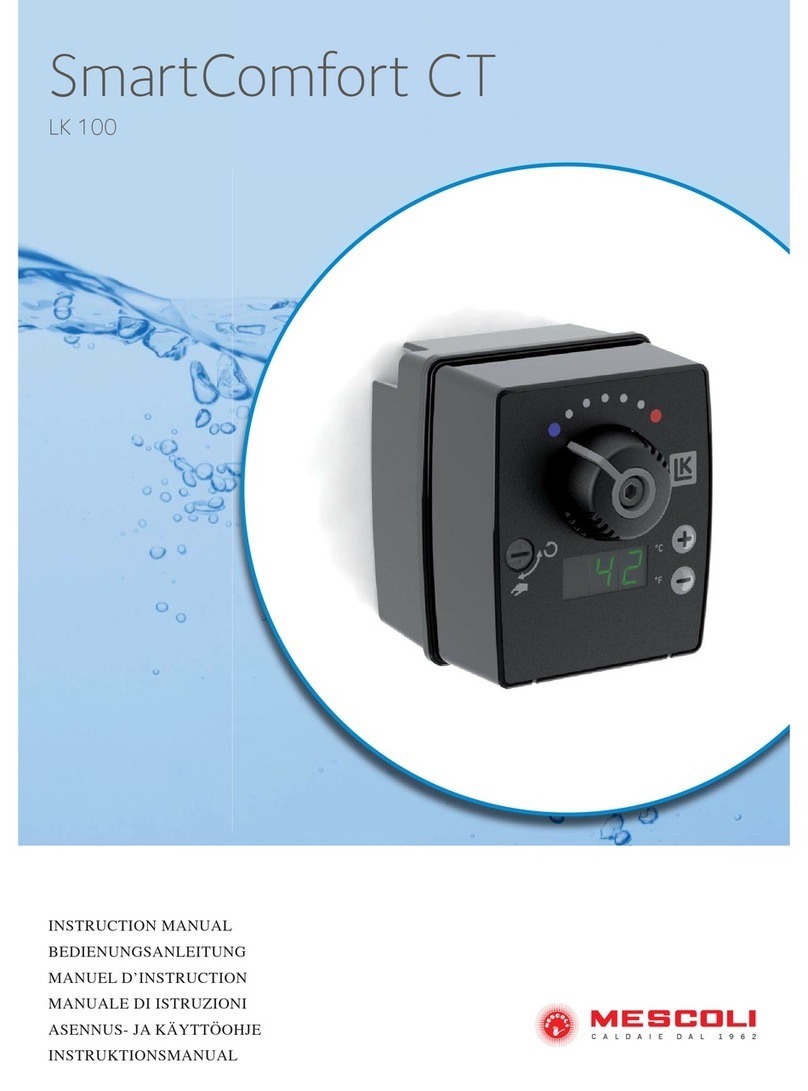
MESCOLI
MESCOLI LK100 instruction manual
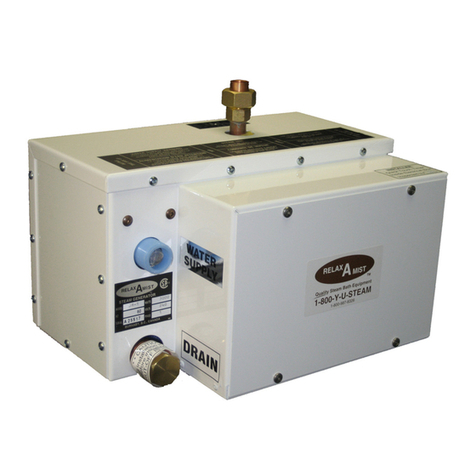
RELAX-A-MIST
RELAX-A-MIST JR-1 installation instructions
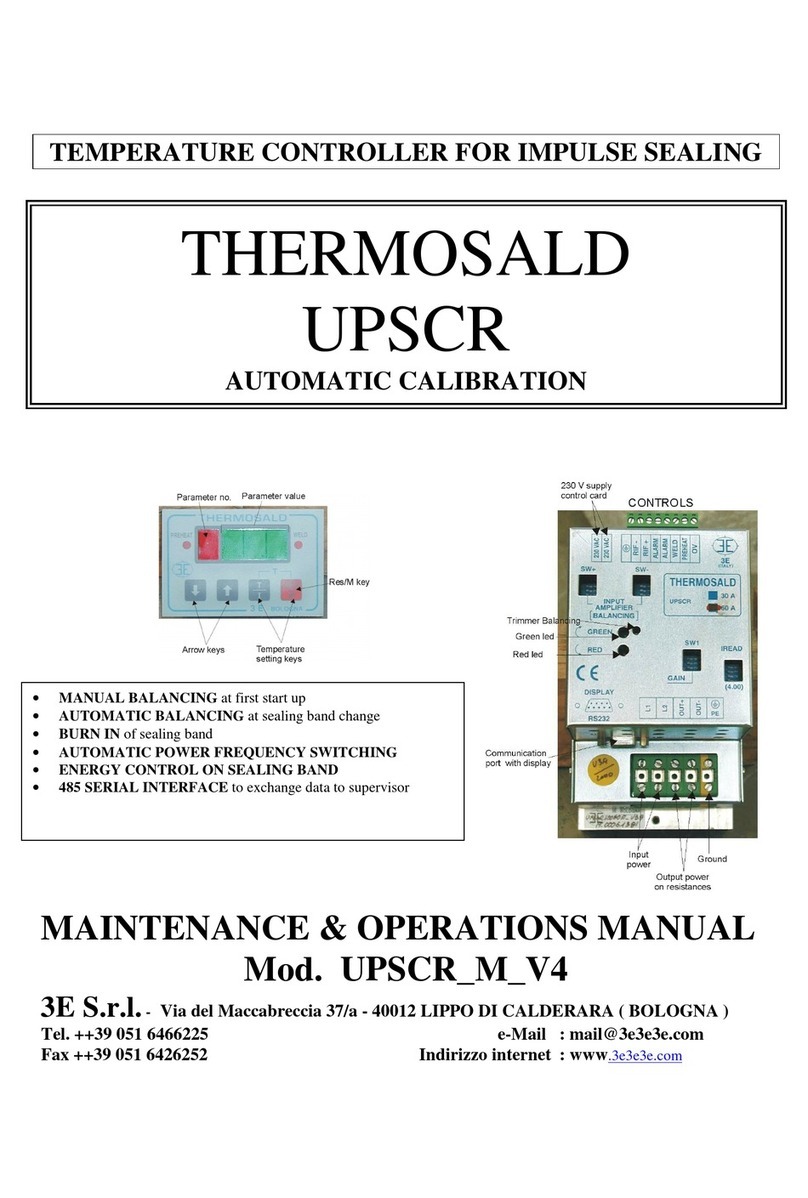
THERMOSALD
THERMOSALD UPSCR Series Maintenance & Operation Manual
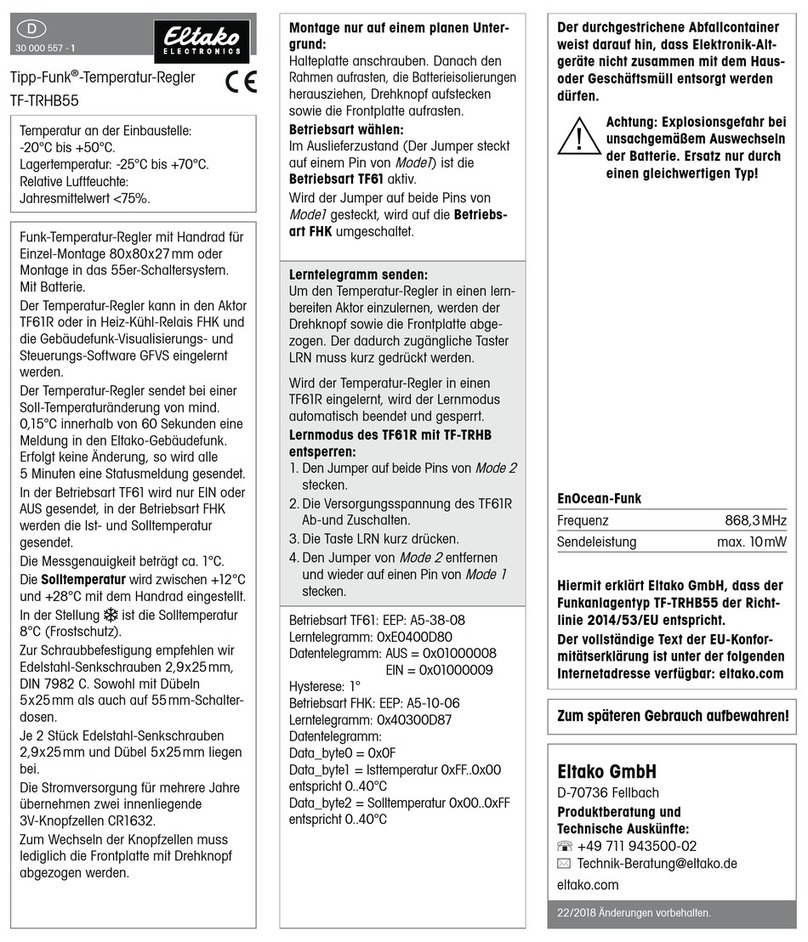
Eltako electronics
Eltako electronics Tap-radio TF-TRHB55 manual

Greystone Energy Systems
Greystone Energy Systems HATSOB Series installation instructions

KELD
KELD KLTX3 Specification and operating instructions
